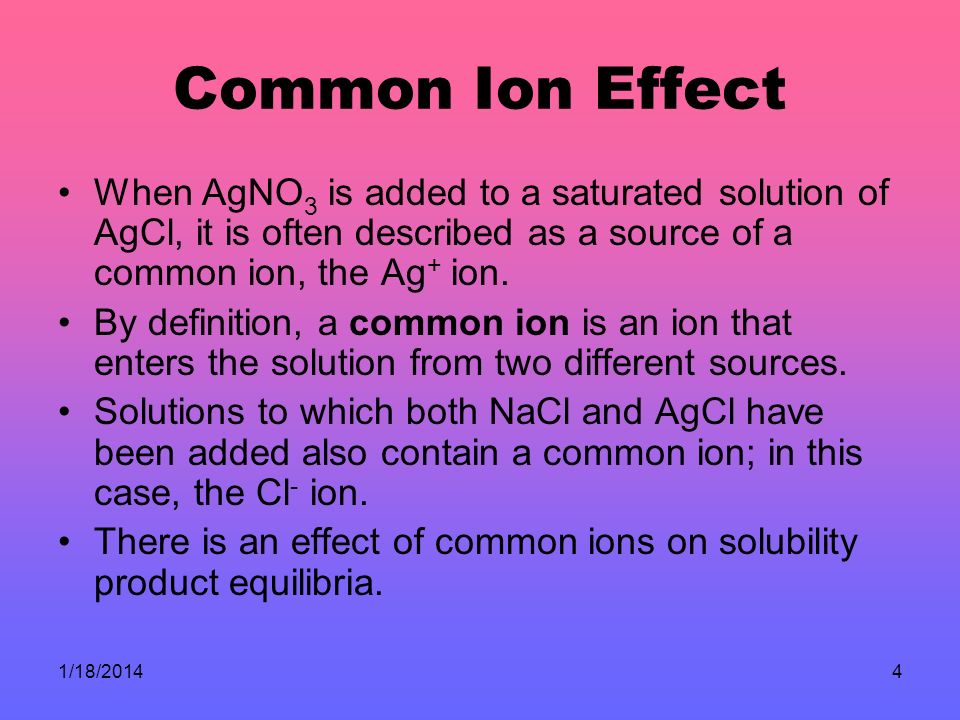common ion effect

source : slide share.net
Common Ion Effect
” The decrease in the degree of dissociation of a weak electrolyte on addition of a strong electrolyte containing a common ion . This is known as common ion effect”
Dissociation of acetic acid [CH3COOH ]decreases in presence of sodium acetate
Ex.1–
CH3COONa—–> CH3COO– + Na+
CH3COOH—–> CH3COO– + H+
Weak Electrolyte Common ion
A/c to law of mass action,
CH3COONa is a strong electrolyte, it is almost completely ionised into acetate ion [CH3COO– ]& sodium ion [Na+ ].When CH3COONa is added to the solution of acetic Acid the concentration of CH3COO– increases.
Concentration of (H+) ions depend upon the concentration of (CH3COO–)
when Concentration of (CH3COO–) increases then concentration of H+ decreases. It means dissociation of CH3COOH is decreased.
Ex.2- Dissociation of NH4OH decreases in presence of NH4Cl. Explain
NH4Cl —–> NH4+ + Cl–
NH4OH —–> NH4+ + OH–
weak electrolyte Common ion
A/c to Law of mass action-
NH4Cl is a strong electrolyte & ionises to give NH4+ & Cl–. After the addition of NH4OH, the Concentration of NH4+ increases .
Concentration of (OH–) depends upon the concentration of NH4+. So concentration of [OH–] decreases. Hence dissociation of NH4OH decreases.
Hence in presence of common ion, dissociation of weak electrolyte decreases.







